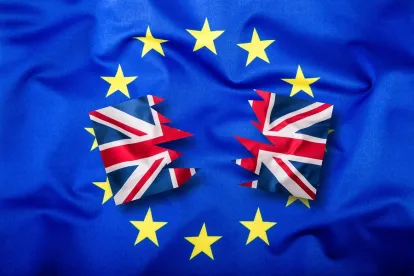Transatlantic trade tensions, the Brexit negotiations, migration, and Eurozone reform will dominate the June 28 European Council. Each of these issues are potentially divisive, and the leaders know that a new dose of solidarity will be needed to address them properly.
They also know that next year will see additional challenges to the cohesion and the stability of the Union. The European Parliament election, the appointment of new institutional leaders, and the decision on the new multi-annual financial framework will require a more serene climate than today’s.
However, with the election of a populist government in Italy, governments in central Europe that include the far right and, recently, a row between the CDU and the CSU weakening Chancellor Angela Merkel, the consensus building among heads and state and government might be difficult when they next meet. .
This blog examines briefly the four main challenges, and how the European Council is likely to address them at the end of the month.
Migration
Migration is a divisive issue ins many countries – even in Germany – but it has also become a serious factor of division among EU members, North and South, East and West.
Migrants are arriving in the Southern, Mediterranean countries – Italy, Greece, Spain – and, according to the Dublin Regulation, these countries of arrival are responsible for processing most asylum requests. No solution has yet been agreed to alleviate the burden falling on these countries. This lack of solidarity of the other Member States has fed Euroscepticism – notably, in Italy, where the anti-immigrant Lega party was handed the reins of government after the last elections.
The East-West divide is more geopolitical and rooted in history. Most Western European countries were formerly colonial powers, and are more used to hosting significant Muslim and African-origin communities; to the East, Central European countries are more homogenous, and keen to recover fully their national identity after communist times. This is why these countries never accepted the EU decision of 2015 to spread refugees arriving in the EU amongst all Member States with a system of quotas.
In this vein, the June European Council will essentially address a new revision of the Dublin agreement which implies:
- A re-introduction of burden sharing, but making this mandatory only in very exceptional circumstances
- That countries who do not want to welcome refugees could help in some other way, by making financial contributions to the management of the borders, or meeting other expenses linked to migration
- A re-definition of the number of years in which the country of arrival is “responsible” for the migrant (10 in the original proposal, 2 for Italy, 8 in the current compromise proposal of the Bulgarian presidency of the Council).
Meanwhile, the Bavarian CSU interior minister of Germany, Horst Seehofer, wants to refuse entry to the country to all migrants having entered an asylum request in another country – which, in Merkel’s view, could be a first step to the closure of EU internal borders and the end of Schengen. The last Home Affairs Council on June 5 ended in deep disagreement and it would be virtually a miracle if the leaders, including the new Italian prime minister, manage to find a compromise at the end of the month. German Chancellor Angela Merkel may therefore organize a meeting with a few leaders beforehand to try to break the deadlock.
Eurozone reform
The long-expected reform of the Eurozone will be discussed in a special summit regrouping the 19 members of the Eurozone.
After the proposals made by president Macron and the EU Commission at the end of last year, Angela Merkel, in a long interview on June 3 to the Frankfurter Allgemeine Sonntagszeitung, presented the position of the new German government. A working group is actively trying to make a synthesis of the three – whilst also trying not to make it too minimalist. France and Germany are supposed to make a joint proposal. Their finance ministers met last week, and Merkel and Macron will meet on June 19 to discuss the issue .
In essence, the issues discussed are:
- A Eurozone budget, as proposed by Macron – or “an investment budget for the Euro area” in Merkel terms; or a line in the EU budget, as proposed by the Commission. Germany seems to have agreed that this budget would not just be for investments but also for “stabilization”.
- Changing the European Stability mechanism (ESM) in a European Monetary Fund – which could be an EU agency or remain intergovernmental. The question is, ultimate, who will ensure the monitoring of national budgets – the Fund, or, as is now the case, the European Commission?
- The completion of the Banking Union, with a backstop for the Single Resolution Fund in the ESM, and a European Deposit Insurance Scheme (thus far rejected by Germany).
Here, again, the question of solidarity dominates the discussion, and Germany continues to resist the mutualisation of risks that the others consider to be indispensable for the stability of the common currency.
Trade Conflicts
After the chaotic G7 meeting of June 9 to 10, the EU (and others) confirmed its intention to implement retaliatory measures intended to “re-balance” trade with the United States after the imposition of tariffs on steel and aluminum.
The Commission has also sent the Council and the Parliament an amended version of the so-called “Blocking Regulation” intended to encourage European companies to continue their activities in Iran. If there are no objections (which is likely), the statute should enter into force on August 6, the day the American sanctions come into effect. However, it remains unclear what will be the reaction of European companies that resumed operations in Iran after the conclusion of the JCPOA, which run the risk of sanctions on their U.S. activities.
A new conflict began on June 12, when the U.S. Department of Commerce decided to impose combined anti-subsidy and anti-dumping duties, ranging from 30 to 45 percent, on Spanish olives. The Commission reacted immediately, calling this an inadmissible protectionist measure. The obvious risk is that this will become a precedent for further challenges to the agri-food products benefiting from the EU Common Agricultural Policy.
Member States do not have identical views on how to deal with the measures adopted in Washington, but the divergences are more on the approach than on the substance. Some would like to continue negotiating, offering trade concessions, or even re-opening negotiations on TTIP; others consider that the U.S. president will only change course if the EU reaction is strong.
The way the G7 meeting played out has built support for this last approach. But the EU’s resolve will be tested if further action is taken in Washington. There, the most likely next step, since an inquiry is already underway, is an increase in tariffs on the import of cars in the US – a measure aimed directly at Germany.
The G7 drama also makes European leaders fearful of the upcoming NATO summit on July 11 and 12. New pressure by the U.S. President on European countries about the share of their GDP spent on defense has already been brought to bear, and it is not beyond the realms of possibility that the Summit should end in unwanted acrimony.
Brexit
The EU 27 were hoping to finalize the withdrawal treaty by the June European Council. They had promised the Irish Prime Minister that, if nothing else, the issue of the Irish border would be solved. But this will not be the case.
As agreed before, a “legal” text addressing the issue of the border between the Republic of Ireland and Northern Ireland needs to be inserted in a protocol annexed to the Withdrawal Treaty. The December joint report agreed by the UK and the 27 included a “backstop” on this issue, but there is no agreement yet on how the protocol should be formulated.
A solution could have been to keep Northern Ireland in the EU customs Union – but that would have created a border between Northern Ireland and the rest of the UK, which for obvious reasons the Northern Irish unionists that support Theresa May’s Minority government in Westminster cannot accept (as to which, see here our blog post on the Brexit negotiations of October 27, 2017).
This is why, on June 7, the UK presented a “technical note” proposing “temporary customs arrangements,” according to which the territory of the UK as a whole would remain in the EU’s customs territory until “further customs arrangements” can be introduced – based on technical solutions that are yet to be developed. The UK expects these future arrangements to be in place by end December 2021 at the latest, but obviously no precise date can be fixed.
The 27 consider that this note moves in the right direction, but that it raises a number of questions that cannot be answered before the end of June. The most important of these is the “alignment” of regulations – which requires that, on top of staying in a Customs Union with the EU, the UK must also stay in the internal market for goods. (This is not mentioned in the technical note, and could be seen as “cherry-picking” by the EU side.)
More broadly, the 27 remain united on Brexit, and continue to trust the EU institutions to lead the negotiations for them. But the current debate in the UK, where opinions on Brexit are increasingly polarized, makes them fear that an exit with no deal is still possible – all the more so, given that the date of March 29, 2019, has been re-introduced into the Withdrawal Bill currently making its way through the British Parliament.
On the other issues of the day – trade, migration, Eurozone reform, as well as security and defense, which will also be discussed at the June European Council – the UK is keen to display its solidarity with its 27 EU partners. Indeed, this solidarity is sometimes stronger even than before the 2016 referendum – which took place before the U.S. Presidential election. In this sense at least, the Trump administration has brought greater unity to a divided European continent.





 />i
/>i
